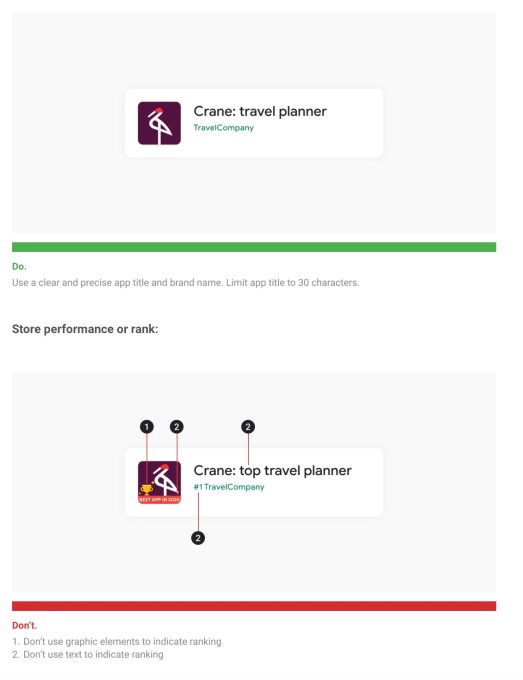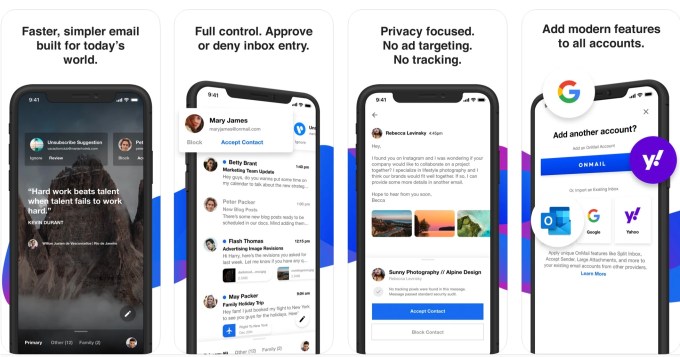News: The most disastrous sales cycle in the world
Startups constantly talk about being mission-oriented, but it’s hard to take most of those messages seriously when the mission is optimizing cash flow for tax efficiency. However, a new generation of startups is emerging that are taking on some of the largest global challenges and bringing the same entrepreneurial grit, operational excellence, and technical brilliance
Startups constantly talk about being mission-oriented, but it’s hard to take most of those messages seriously when the mission is optimizing cash flow for tax efficiency. However, a new generation of startups is emerging that are taking on some of the largest global challenges and bringing the same entrepreneurial grit, operational excellence, and technical brilliance to bear on actual missions — ones that may well save thousands of lives.
ClimateTech has been a huge beneficiary of this trend in general, but one small specialty has caught my eye: disaster response. It’s a category for software services that’s percolated for years with startups here and there, but now a new crop of founders is taking on the challenges of this space with renewed urgency and vigor.
As the elevator pitch would have it, disaster response is hitting hockey stick growth. 2020 was a brutal year, and in more ways than just the global COVID-19 pandemic. The year also experienced a record number of hurricanes, among the worst wildfire seasons in the Western United States, and several megastorms all across the world. Climate change, urbanization, population growth, and poor response practices have combined to create some of the most dangerous conditions humanity has ever collectively faced.
I wanted to get a sense of what the disaster response market has in store this decade, so over the past few weeks, I have interviewed more than 30 startup founders, investors, government officials, utility execs and more to understand this new landscape and what’s changed. In this four-part series on the future of technology and disaster response, to be published this weekend and next, we’ll look at the sales cycle in this market, how data is finally starting to flow into disaster response, how utilities and particularly telcos are dealing with internet access issues, and how communities are redefining disaster management going forward.
Before we get into all the tech developments in disaster response and resilience though, it’s important to ask a basic question: if you build it, will they come? The resounding answer from founders, investors, and government procurement officials was simple: no.
In fact, in all my conversations for this series, the hell of the emergency management sales cycle came up repeatedly, with more than one individual describing it as possibly the toughest sale that any company could make in the entire world. That view might be surprising in a market that easily runs into the tens of billions of dollars if the budgets for procurement are aggregated across local, state, federal, and international governments. Yet, as we will see, the unique dynamics of this market make almost any traditional sales approach useless.
Despite that pessimism though, that doesn’t mean sales are impossible, and a new crop of startups are piercing the barriers of entry in this market. We’ll look at the sales and product strategies that startups are increasingly relying on today to break through.
The sale from hell
Few will be surprised that government sales are hard. Generations of govtech startup founders have learned that slow sales cycles, byzantine procurement processes, cumbersome verification and security requirements, and a general lassitude among contract officers makes for a tough battlefield to close on revenue. Many government agencies now have programs to specifically onboard startups, having discovered just how hard it is for new innovations to run through their gauntlet.
Emergency management sales share all the same problems as other govtech startups, but then they deal with about a half dozen more problems that make the sales cycle go from exhausting to infernal hell.
The first and most painful is the dramatic seasonality of the sales in the emergency space. Many agencies that operate on seasonal disasters — think hurricanes, wildfires, winter storms, and more — often go through an “action” period where they respond to these disasters, and then transition into a “planning” period where they assess their performance, determine what changes are needed for next season, and consider what tools might be added or removed to increase the effectiveness of their responders.
Take Cornea and Perimeter, two startups in the wildfire response space that I profiled recently. Both of the teams described how they needed to think in terms of fire seasons when it came to product iteration and sales. “We took two fire seasons to beta test our technology … to solve the right problem the right way,” Bailey Farren, CEO and co-founder of Perimeter, said. “We actually changed our focus on beta testing during the [2019 California] Kincaid fire.”
In this way, disaster tech could be compared to edtech, where school technology purchases are often synchronized with the academic calendar. Miss the June through August window in the U.S. education system, and a startup is looking at another year before it will get another chance at the classroom.
Edtech might once have been a tougher sale to make in order to thread that three-month needle, but disaster response is getting more difficult every year. Climate change is exacerbating the length, severity, and damage caused by all types of disasters, which means that responding agencies that might have had six months or more out-of-season to plan in the past are sometimes working all year long just to respond to emergencies. That gives little time to think about what new solutions an agency needs to purchase.
Worse, unlike the standardized academic calendar, disasters are much less predictable these days as well. Flood and wildfire seasons, for instance, used to be relatively concentrated in certain periods of the year. Now, such emergencies can emerge practically year-round. That means that procurement processes can both start and freeze on a moment’s notice as an agency has to respond to its mission.
Seasonality doesn’t just apply to the sales cycle though — it also applies to the budgets of these agencies. While they are transpiring, disasters dominate the eye of the minds for citizens and politicians, but then we forget all about them until the next catastrophe. Unlike the annual consistency of other government tech spending, disaster tech funding often comes in waves.
One senior federal emergency management official, who asked not to be named since he wasn’t authorized to speak publicly, explained that consistent budgets and the ability to spend them quickly is quite limited during “blue sky days” (i.e. periods without a disaster), and agencies like his have to rely on piecing together supplementary disaster funds when Congress or state legislatures authorize additional financing. The best agencies have technological roadmaps on hand so that when extra funding comes in, they can use it immediately to realize their plans, but not all agencies have the technical planning resources to be that prepared.
Amir Elichai, the CEO and co-founder of Carbyne, a cloud-native platform for call handling in 911 centers, said that this wave of interest crested yet again with the COVID-19 pandemic last year, triggering huge increases in attention and funding around emergency response capabilities. “COVID put a mirror in front of government faces and showed them that ‘we’re not ready’,” he said.
Perhaps unsurprisingly, next-generation 911 services (typically dubbed NG911), which have been advocated for years by the industry and first responders, is looking at a major financing boost. President Biden’s proposed infrastructure bill would add $15 billion to upgrade 911 capabilities in the United States — funding that has been requested for much of the last decade. Just last year, a $12 billion variant of that bill failed in the Senate after passing the U.S. House of Representatives.
Sales are all about providing proverbial painkillers versus vitamins to customers, and one would expect that disaster response agencies looking to upgrade their systems would be very much on the painkiller side. After all, the fear and crisis surrounding these agencies and their work would seem to bring visceral attention to their needs.
Yet, that fear actually has the opposite effect in many cases, driving attention away from systematic technology upgrades in favor of immediate acute solutions. One govtech VC, who asked not to be named to speak candidly about the procurement process his companies go through, said that “we don’t want to paint the picture that the world is a scary and dangerous place.” Instead, “the trick is to be … focused on the safety side rather than the danger.” Safety is a much more prevalent and consistent need than sporadically responding to emergencies.
When a wave of funding finally gets approved though, agencies often have to scramble to figure out what to prioritize now that the appropriated manna has finally dropped from the legislative heaven. Even when startups provide the right solutions, scrying which problems are going to get funded in a particular cycle requires acute attention to every customer.
Josh Mendelsohn, the managing partner at startup studio and venture fund Hangar, said that “the customers have no shortage of needs that they are happy to talk about … the hardest part is how you narrow the funnel — what are the problems that are most meritorious?” That merit can, unfortunately, evolve very rapidly as mission requirements change.
Let’s say all the stars line up though — the agencies have time to buy, they have a need, and a startup has the solution that they want. The final challenge that’s probably the toughest to overcome is simply the lack of trust that new startups have with agencies.
In talking to emergency response officials the past few weeks, reliability unsurprisingly came up again and again. Responding to disasters is mission-critical work, and nothing can break in the field or in the operations center. Frontline responders still use paper and pens in lieu of tablets or mobile phones since they know that paper is going to work every single time and not run out of battery juice. The move fast and break things ethos of Silicon Valley is fundamentally incompatible with this market.
Seasonality, on-and-off funding, lack of attention, procurement scrambling, and acute reliability requirements combine to make emergency management sales among the hardest possible for a startup. That doesn’t even get into all the typical govtech challenges like integrating with legacy systems, the massive fragmentation of thousands of emergency response agencies littered across the United States and globally, and the fact that in many agencies, people aren’t that interested in change in the first place. As one individual in the space described how governments approach emergency technology, “a lot of departments are looking at it as maybe I can hit retirement before I have to deal with it.”
The strategies for breaking out of limbo
So the sales cycle is hell. Why, then, are VCs dropping money in the sector? After all, we’ve seen emergency response data platform RapidSOS raise $85 million just a few months ago, about the same time Carbyne raised $25 million. There are quite a few more startups at the earliest phases that have raised pre-seed and seed investment as well.
The key argument that nearly everyone in this sector agreed on is that founders (and their investors) have to throw away their private-sector sales playbooks and rebuild their approach from the bottom up to sell specifically to these agencies. That means devising entirely different strategies and tactics to secure revenue performance.
The first and most important approach is, in some respects, to not even start with a company at all, but rather to start learning what people in this field actually do. As the sales cycle perhaps indicates, disaster response is unlike any other work. The chaos, the rapidly changing environment, the multi-disciplinary teams and cross-agency work that has to take place for a response to be effective have few parallels to professional office work. Empathy is key here: the responder that uses paper might have nearly lost their life in the field when their device failed. A 911 center operator may have listened to someone perish in real-time as they scrambled to find the right information from a software database.
In short, it’s all about customer discovery and development. That’s not so different from the enterprise world, but patience radiated out of many of my conversations with industry participants. It just takes more time — sometimes multiple seasons — to figure out precisely what to build and how to sell it effectively. If an enterprise SaaS product can iterate to market-fit in six months, it might take two to three years in the government sector to reach an equivalent point.
Michael Martin of RapidSOS said “There is no shortcut to doing customer discovery work in public service.” He noted that “I do think there is a real challenge between the arrogance of the Silicon Valley tech community and the reality of these challenges“ in public safety, a gap that has to be closed if a startup wants to find success. Meanwhile, Bryce Stirton, president and co-founder of public-safety company Responder Corp, said that “The end user is the best way to look at all the challenges … what are all the boxes the end user has to check to use a new technology?”
Mendelsohn of Hangar said that founders need to answer some tough questions in that process. “Ultimately, what are your entry points,” he asked. “Cornea has had to go through that customer discovery process … it all feels necessary, but what are the right things that require the least amount of behavior change to have impact immediately?”
Indeed, that process is appreciated on the other side as well. The federal emergency management official said, “everyone has a solution, but no one asked me about my problem.” Getting the product right and having it match the unique work that takes place in this market is key.
Let’s say you have a great product though — how do you get it through the perilous challenges of the procurement process? Here, answers differed widely, and they offer multiple strategies on how to approach the problem.
Martin of RapidSOS said that “government does not have a good model for procuring new services to solve problems.” So, the company chose to make its services free for government. “In three years, we went from no agencies using our stuff to all agencies using our stuff, and that was based on not making it a procurement problem,” he said. The company’s business model is based on having paid corporate partners who want to integrate their data into 911 centers for safety purposes.
That’s a similar model used by MD Ally, which received a $3.5 million seed check from General Catalyst this past week. The company adds telehealth referral services into 911 dispatch systems, and CEO and founder Shanel Fields emphasized that she saw an opportunity to create a revenue engine from the physician and mental health provider side of her market while avoiding government procurement.
Outside of what might be dubbed “Robinhood for government” (aka, just offering a service for free), another approach is to link up with more well-known and trusted brand names to offer a product that has the innovation of a startup but the reliability of an established player. Stirton of Responder said “we learned in [this market] that it takes more than just capital to get companies started in this space.” What he found worked was building private-sector partnerships to bring a joint offering to governments. For instance, he noted cloud providers Amazon Web Services and Verizon have good reputations with governments and can get startups over procurement hurdles (TechCrunch is owned by Verizon Media, which is owned by Verizon).
Elichai of Carbyne notes that much of his sales is done through integration partners, referencing CenterSquare as one example. For 911 services, “The U.S. market is obviously the most fragmented” and so partners allow the company to avoid selling to thousands of different agencies. “We are usually not selling direct to governments,” he said.
Partners can also help deal with the problem of localism in emergency procurement: many government agencies don’t know precisely what to buy, so they simply buy software that is offered by companies in their own backyard. Partners can offer a local presence while also allowing a startup to have a nimble national footprint.
Another angle on partners is building out a roster of experienced but retired government executives who can give credibility to a startup through their presence and networks. Even more than in enterprise, government officials, particularly in emergency management, have to work and trust one another given the closely-coupled work that they perform. Hearing a positive recommendation from a close contact down the street can readily change the tenor of a sales conversation.
Finally, as much as emergency management software is geared for governments, private sector companies increasingly have to consider much of the same tooling to protect their operations. Many companies have distributed workforces, field teams, and physical assets they need to protect, and often have to respond to disasters in much the same way that governments do. For some startups, it’s possible to bootstrap in the private sector early on while continuing to assiduously develop public sector relationships.
In short, a long-term customer development program coupled with quality partnerships and joint offerings while not forgetting the private sector offers the best path for startups to break through into these agencies.
The good news is that the hard work can be rewarded. Not only are there serious dollars that flow through these agencies, but the agencies themselves know that they need better technology. Tom Harbour, who is chief fire officer at Cornea and formerly national director of fire management at the U.S. Forest Service, notes that “These are billions of dollars we spend … and we know we can be more efficient.” Government doesn’t always make it easy to create efficiency, but for the founders willing to go the distance, they can build impactful, profitable, and mission-driven companies.


 The EU is
The EU is 






 Mobile bank Current
Mobile bank Current  Snap
Snap 




























